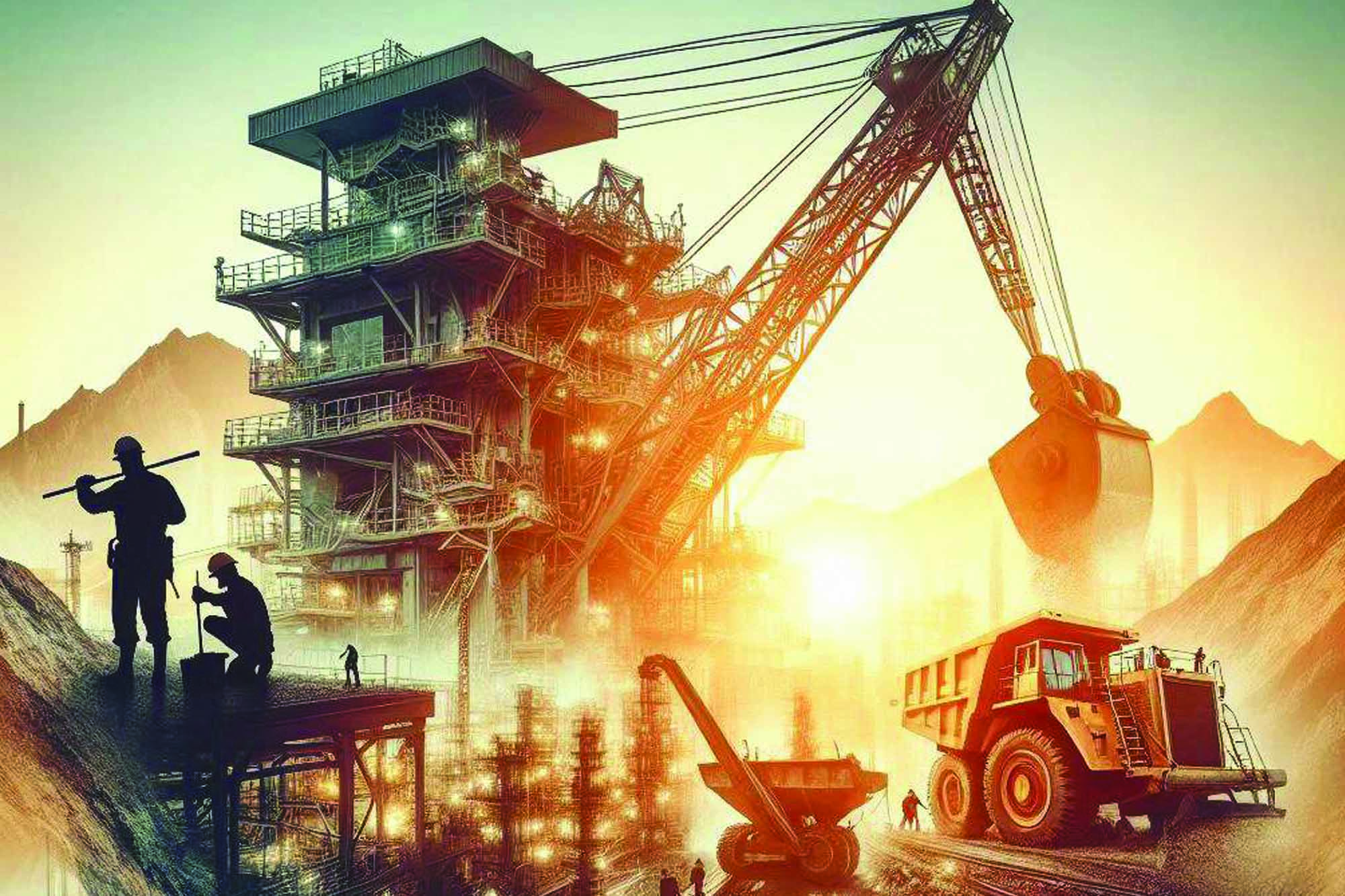Mining for Recovery
By Edit Team | April 6, 2020 2:13 pm SHARE

The mining sector in India has had its share of ups and downs. As it enters the recovery mode policy changes, IoT and digitisation will be the keywords for its resurgence in India’s economic ecosystem.
Mining is embedded in the history of India. Metallurgy in India started during the 2nd millennium BCE and continued also in British Raj. Mining of metals in India gained importance since metals were extensively used for the creation of swords, production of firearms and ammunition. In the colonial era, many metal mines, especially in the state of Rajasthan, were abandoned. This was done as per the Arms Act in 1878 which was introduced with the intention of curbing future wars and rebellions against the British Empire.
Post-1947 when the phase of nation-building started Mining was one of the focus areas. Commercial coal mining gave a lot of impetus to the mining sector. National Coal Development Corporation (NCDC) came into the picture it was tasked with overseeing a planned development of the coal industry.
Over a period of time, the mining sector performed reasonably well. Coal India Limited, The National Mineral Development Corporation (NMDC), Manganese Ore Indian Limited, Steel Authority of India Limited, NationalAluminium Corporation, Oil and Natural Gas Corporation, Hindustan Copper Limited, Singereni Companies and Collieries Limited, Vedantha, Tatas, Adani, and Jindals emerged as the big players in the sector.
Present Day Scenario
“Mining Sector,” says LS Shekhawat, Director Operations, Hindustan Zinc Limited “provides basic raw materials to many important industries – technology, manufacturing, construction, automotive, day to day appliances, start-ups, to name a few. These industries together aid in generating job opportunities, economic growth, innovation and bringing more sustainable value to the society.”
“Expansion in manufacturing industry & automotive production in coming times,” he continues “will be key drivers in metals & mining sectors in India. Our country possess wide range of minerals & natural resources, giving a fair advantage in the cost of production & their conversion costs. Demand for iron and steel is set to continue, given the strong growth expectations for the residential and commercial building industry”.
Apart from its significant role in the Indian economic ecosystem, the large reserves which India possesses makes it an important player in the mining arena. “India,” says Mukaya Simubali, Executive Director (Asia), AAC Mining Executors Group,“has large reserves of Iron ore, Bauxite, Chromium, Manganese ore, Baryte, Coal and Zinc. Hence the country is considered as one of the most promising mining markets in the world.”
On the policy side too reforms are up for consideration “Even though the union budget didn’t provide much opportunity for the sector,” says Puneet Vidyarthi, Brand Leader, Case India, “the Government of India has made some announcements to make the rules of commercial auction easy, as well as on the simultaneous issue of prospecting the mining licenses, to make them more attractive for bidders and investors. We are hopeful that the government will take more steps to boost the productivity of the mining sector.”
Tech Transformations in Mining
“There have been major tech transformations in the mining sector,” says Hemant Mathur– Assistant VP Sales and Marketing, Tata Hitachi, “it marks a shift from manual operation to mechanization. The users in the mining sector are working towards monitoring the mining processes for efficiency, productivity, utilisations, safety etc. They are also working towards integration of various mining operations which will make way for efficient monitoring of all the activities on a centrally controlled dash board”.
“The sector,”says Mukaya, “has opened up to the idea of using Tele-remote systems where operators can operate their machines from surface instead of underground. Currently Tele-remote systems are used in hauling & loading and drilling as well. Drones are being put to good use, they are being used for asset management, time-lapse photography, measuring stockpile inventory, safety and surveillance in hazardous areas and site mapping.”
Role of Digitisation and Safety
“Digitisation and smart solutions are the future of the country for Indian mining,” says Hemant “Customers have started talking about IoT in mining machines which cover diagnostics, performance parameters etc. to be made available to them. Digitisation will enable customers to plan better as far machine maintenance, spare replacements, correcting technical and operational glitches is concerned. This will also ensure a proper utilization of the machine, maximum uptime and keep them at peak performance”.
The importance of safety has been a concern in the mining industry. In order to improve safety especially in areas prone to hazard, effort has been made to introduce autonomous technologies. Though it’s a new age advancement autonomous technologies are being tested and used across the globe.
Testing a driverless dump trucks in a real mining environment is an important step in implementing unmanned extraction and haulage technology and going forward India too will experience such advances in its mining sector. Hitachi Construction Machinery Co. Ltd. has developed an autonomous driving system for dump trucks that is able to operate continuously even in the difficult communication environments that prevail at mine sites, increasing the number of trucks able to be controlled by utilizing a permission control technique. Such systems have probably become even more important in the current Covid-19 scenario when social distancing is advised and many mines have to remain functional with lesser manpower.
“Autonomous systems have been developed by many mining machine equipment manufacturers like Hitachi Construction Machinery Ltd, Japan,” says Hemant, “These are slowly getting accepted globally in mines as the mining operations involve human risks and safety becomes the utmost concern. I do believe autonomous systems will have a very important role to play in mining and mitigate the risk it poses to human lives.”
Cookie Consent
We use cookies to personalize your experience. By continuing to visit this website you agree to our Terms & Conditions, Privacy Policy and Cookie Policy.




































































